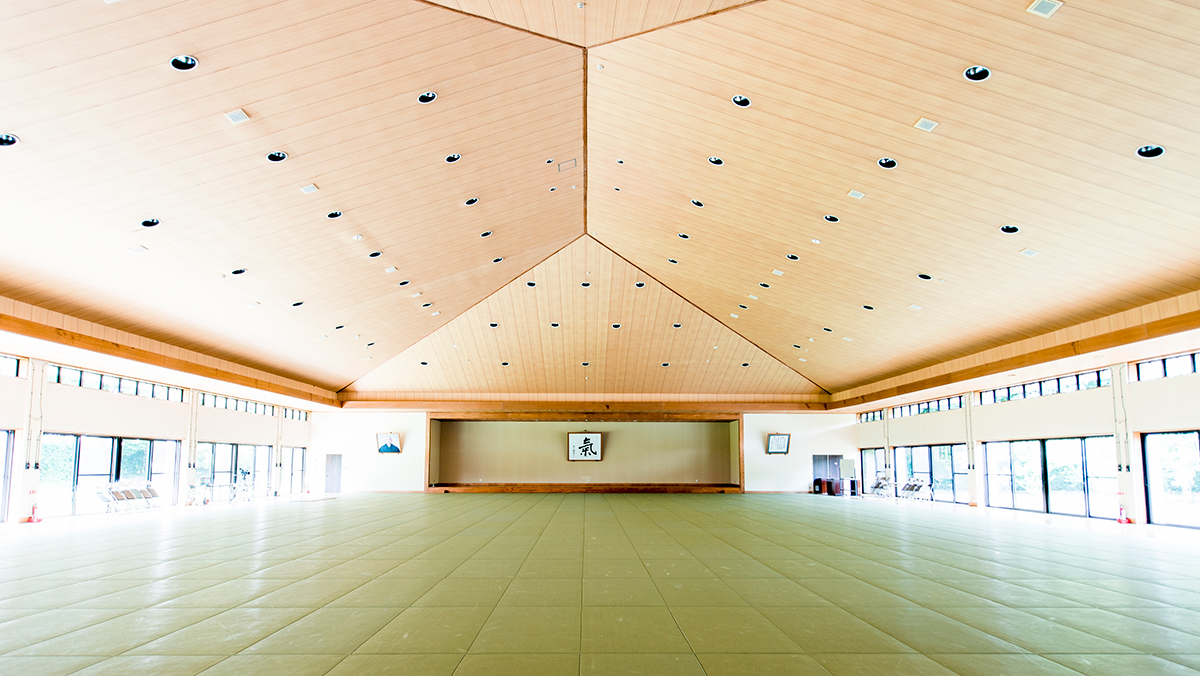I am a part-time lecturer in general education at a university in Tokyo. Every week, I teach the students unification of mind and body in Aikido. During the past 15years, I have taught more than 1,000 university students.
Most of these students usually have no experience in Aikido. I need to teach them in half a year, 14 class sessions of 90 minutes each, and have them learn the basics.
Showing and explaining to the students the waza forms is of course very important but unless they feel and experience the correct way of performing the art or technique, it would be difficult for them to understand it. This is why I make the effort to personally partner with each student, to make sure that they get the correct feeling of the waza.
There are students that were very hardworking and intellectually gifted as well as talented, but because classes are only once a week and only 90 minutes long, it is sometimes not easy for the students to progress quickly. In the beginning, it took a series of trial and error to come out with the best way to guide my students.
One of the challenges that I became aware of was that the students could not recreate or imitate the correct way of doing the techniques, which is very important and essential for their progress.
In order to make sure that they can recreate/imitate the correct way of doing the techniques, the students would have to observe and pay close attention to the way that I taught and showed them the techniques. This would mean that when I showed them the techniques I would have to make sure that everyone in the class could see the movements clearly. Sometimes due to the large size of the class this would not be possible.
I would tell my students before I showed them the techniques, or the point I was trying to make, that they should stand or sit in a position that they could see me clearly and that during my explanation if they can’t see, that they should move to a spot that would help them see clearly. At the beginning, it is sometimes difficult for them to aggressively move to find the place to see during a class, but once they get used to this, they can achieve this.
This practice alone helps the students to learn and improve how to observe and watch correctly.
Even after they become sure of taking a good position where they can see me well, there are a number of students who still cannot imitate/recreate the correct way of moving or performing the technique. This was the next challenge that I faced.
The two common points I found in students that could not recreate/imitate correctly was that they did not pay close attention and just watched loosely. Additionally, their mind was often focused on a certain part of the technique, so that instead of seeing the whole movement they only saw one part.
For beginners, to help them learn correctly it is important to let them watch the movements accordingly: legs, footwork, body (including the head), hand movements. This would help them imitate and remember the whole body movements more easily.
It is very important to teach by how the legs and feet should move, which allows for the posture and balanced movement to come naturally. If the footwork (base) is unnatural, it will not become a good waza. This is why students need to start learning from the footwork.
An example is like a tree. Think of the legs and feet as the roots, the body as the trunk and the arms and hands as the branches. Of course all parts are very important for the tree to grow properly, but if the roots of a tree are not strong it would not be possible for the tree to grow healthily at all.
However, students who have not had training on how to learn and watch movements correctly tend to observe only by parts or observe everything but do not pay full attention. There is a phrase from a long time ago “paying attention to insignificant details.” I found out that this is the main reason why students cannot recreate/imitate correctly.
Therefore, today I teach thoroughly “Recreate/imitate for learning”, “Watch carefully for recreating/imitating” and tell them “Move to watch” and “Watch from footwork→body→hands movement.”
As a result of this way of learning, even with a very limited chance of practicing, students are able to progress and improve. There are many students who learn “How to recreate/imitate” in my Aikido classes and that would help them progress well in their future careers.
After experiencing and going through my own experiences I realized that even though this way of learning and teaching how to watch/observe correctly makes sense, it does not seem to be taught in schools.
We should all learn how to watch and observe things correctly and recreate/imitate in our daily practices. Especially with younger children, if they start to practice this way, their learning abilities could be improved. This way of learning cannot be acquired only by intellectual training.

